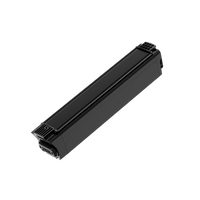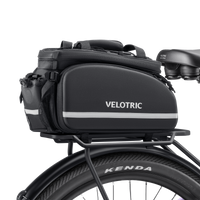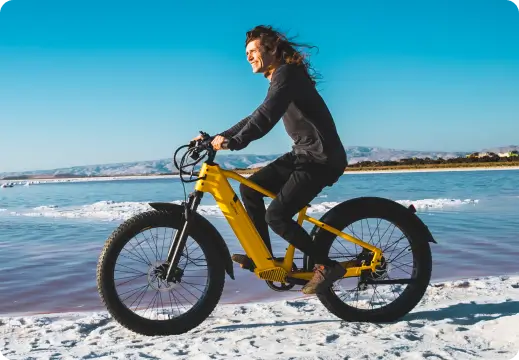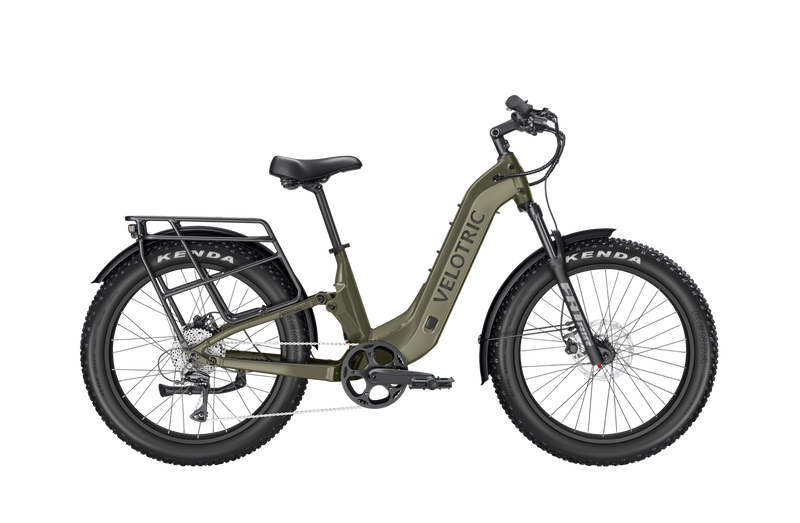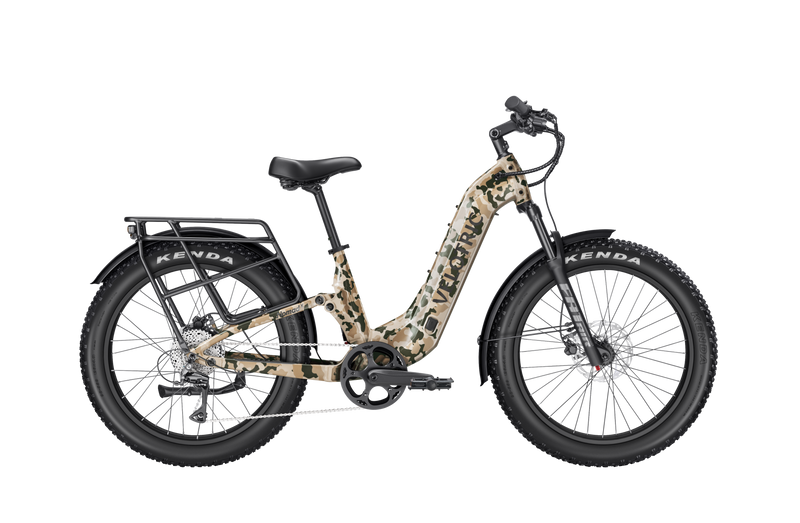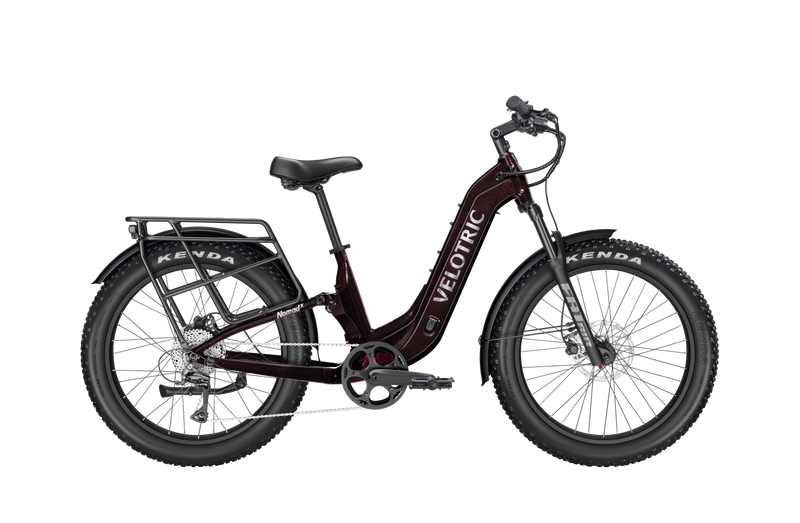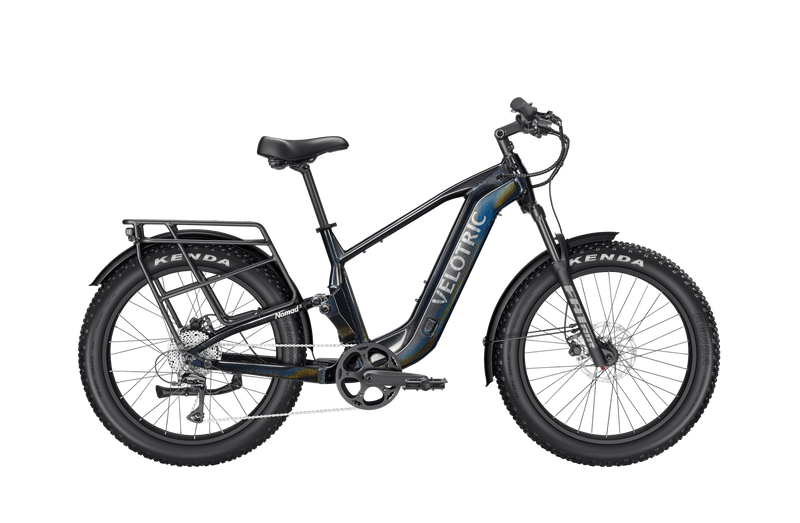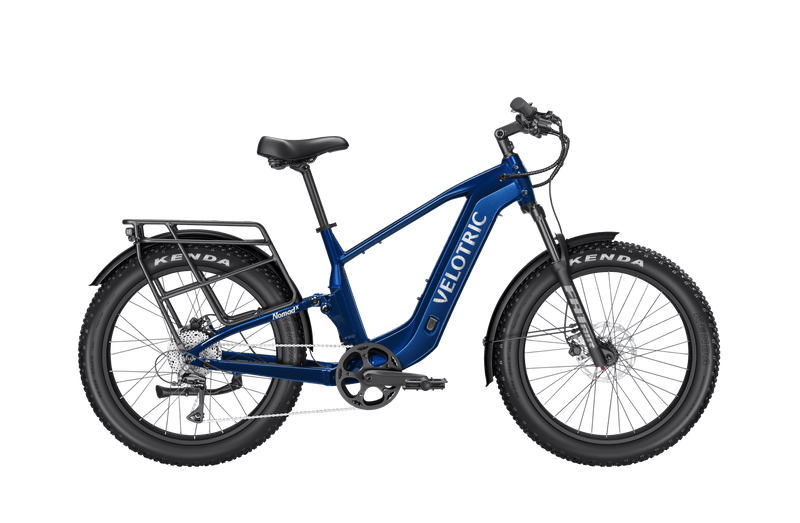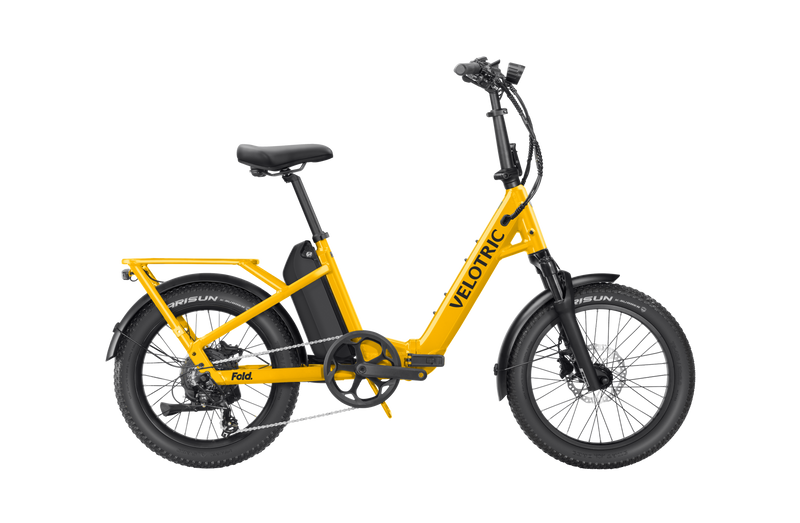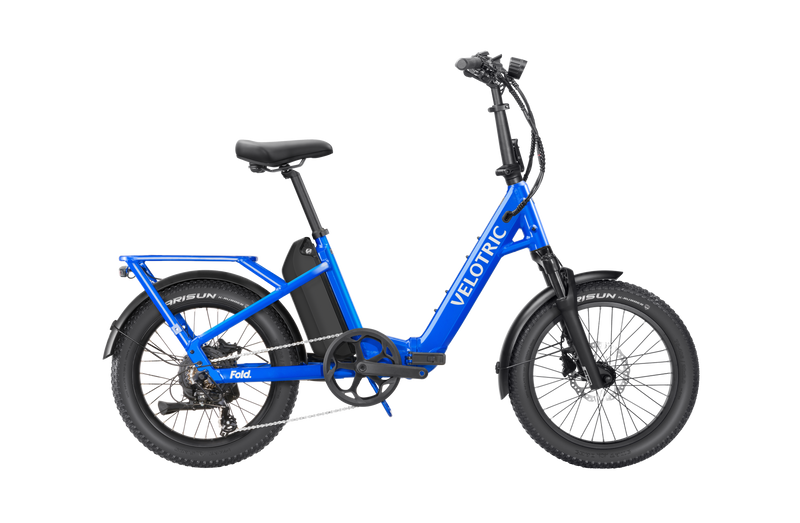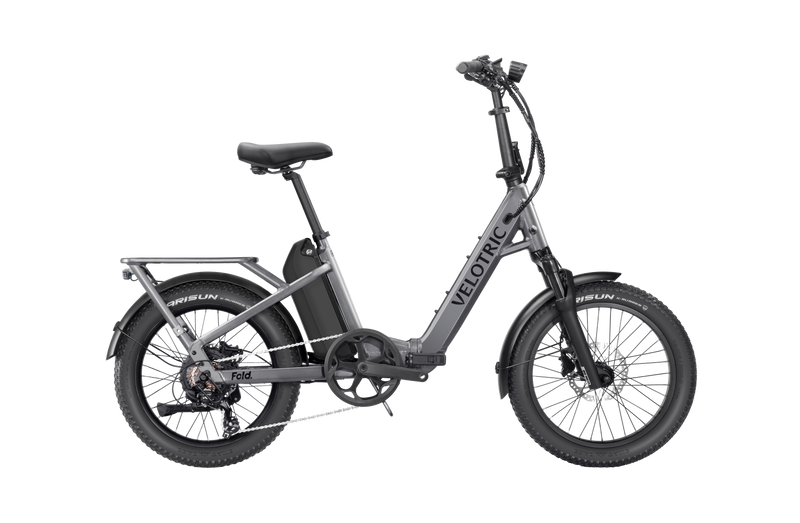Winter doesn’t have to end your riding season — especially if you own a well-built, waterproof electric bike. That said, low temperatures, road salt, moisture, and reduced daylight introduce new challenges that don’t exist during spring or summer. Cold weather affects battery chemistry, braking power, traction, and even the longevity of your drivetrain.
Whether you commute through winter or only ride occasionally during the colder months, proper ebike maintenance is the key to protecting your investment and keeping every ride safe, efficient, and comfortable.
This guide breaks down everything you need to know about winter ebike maintenance, based on real rider experience, engineering principles, and best practices recommended across the industry — including insights that apply directly to modern IPX-rated, UL-certified ebike models.
Why Winter Maintenance Matters More Than You Think
Cold weather introduces several predictable changes in how your electric bike behaves:
- Lithium-ion batteries temporarily lose efficiency and deliver less range.
- Traction decreases on wet, icy, or snowy surfaces.
- Road salt accelerates corrosion on exposed metal parts.
- Moisture affects braking and drivetrain performance, especially if not cleaned off.
- Tire pressure drops faster in low temperatures.
- Metal components contract slightly, which can impact fit and alignment over time.
- Charging safety becomes more important when the battery is cold.
Ignoring these factors doesn’t just make the bike feel worse to ride — it creates unnecessary wear that shortens your ebike’s lifespan. Winter maintenance is less about fixing things and more about preventing damage before it happens.
1. Protect Your Battery: Cold Weather’s Biggest Target
Lithium-ion batteries are particularly sensitive to cold temperatures. As the temperature drops, the chemical reactions inside the cells slow down. This leads to:
- Reduced range and weaker performance.
- Slower acceleration and power delivery.
- Higher perceived drain when riding in high-assist modes.
Cold weather by itself usually doesn’t permanently damage a healthy battery — but charging a cold battery can.
Winter Battery Care Rules
- Bring your battery indoors when you’re not riding, especially below 40°F (4°C).
- Never charge a battery that feels cold to the touch. Let it warm naturally to room temperature first.
- Expect 20–40% less range in winter. This is normal for all lithium-ion ebike batteries.
- Avoid storing the bike outside or in an unheated shed for long periods.
- After a winter ride, wait 30–60 minutes before charging so the cells can warm gradually.
- For multi-week storage, keep the battery at around 50–70% charge, not full and not empty.
A well-maintained ebike battery can easily last 3–5 years. A neglected battery, especially one frequently charged while cold, may start to degrade noticeably in under two years.

2. Keep Tires Properly Inflated (and Adjust for Winter Conditions)
As temperatures drop, so does tire pressure. You’ll typically lose about 1 PSI for every 10°F change in ambient temperature. In winter, that kind of pressure loss happens much faster.
Why tire pressure matters more in winter
- Underinflated tires feel sluggish, reduce range, and increase the risk of pinch flats.
- Overinflated tires reduce the contact patch and can lose grip on icy or wet surfaces.
Winter Tire Best Practices
- Check your tire pressure at least once a week.
- For snow or slush, consider running your tires toward the lower end of the recommended PSI to improve traction.
- If you ride regularly in snow and ice, consider:
- Studded tires for icy streets.
- Fat tires for snow and mixed terrain.
- Tires with more aggressive tread patterns for winter use.
Small adjustments in tire pressure can make a huge difference in how stable and confident your ebike feels on winter roads.
3. Clean Your Ebike More Often (Because of Road Salt)
Snowy and icy roads are often treated with salt or chemical de-icers. These are great for preventing car accidents — but terrible for metal parts on your ebike.
If road salt isn’t removed, it speeds up corrosion on:
- Chains and cassettes
- Bolts and fasteners
- Brake calipers and rotors
- Spokes and nipples
- Exposed metal surfaces on the frame and motor area
Quick Winter Cleaning Routine
After riding on salted or slushy roads:
- Wipe down the frame, fork, and wheels with a damp cloth.
- Gently clean the chain and drivetrain if visible salt or grime has accumulated.
- Dry the bike with a clean towel to prevent moisture sitting on metal surfaces.
- Use a bike-safe anti-corrosion spray on bolts and exposed steel areas (avoid the brake rotors).
- Avoid pressure washers — high-pressure water can force moisture into bearings, connectors, and motor seals.
Waterproof ratings (like IPX6 or IPX7) help with rain and snow, but they don’t stop salt from corroding metal. Only regular cleaning does that.
4. Maintain Your Chain and Drivetrain More Frequently
Winter conditions are brutal on drivetrains. Moisture, salt, and fine grit combine to create a grinding paste that wears parts much faster than in dry conditions.
Winter Drivetrain Care Tips
- Clean and lubricate the chain every 50–80 miles, or any time it looks dry or grimy.
- Use a wet lube designed for rainy or snowy environments — it adheres better and resists wash-off.
- Always wipe off excess lubricant with a cloth. Extra oil attracts more dirt.
- Inspect the chain for rust and replace it when it shows notable stretch.
- If you commute daily in wet, salted conditions, consider drivetrain inspection part of your weekly routine.
A clean, well-lubricated chain reduces resistance, improves motor efficiency, and extends the life of your cassette and chainring.
5. Give Your Brakes Extra Attention
In winter, you rely on your brakes more than ever. Wet rims, icy patches, and reduced traction mean braking distance can increase if your system isn’t in top condition.
Winter Brake Maintenance Tips
- Visually inspect your brake pads regularly. Replace them if they’re worn thin or glazed.
- Listen for scraping, squealing, or grinding — they may indicate contamination or misalignment.
- Clean brake rotors with isopropyl alcohol to remove salt and film buildup.
- If your bike uses hydraulic brakes and the levers feel soft or inconsistent, it may be time for a bleed service.
- Test your brakes at low speed at the start of each ride before mixing with traffic.
Strong, properly maintained brakes aren’t optional in winter — they’re your first line of safety.
6. Check and Protect Electrical Connections
Modern ebikes are designed to handle wet conditions, but it’s still worth checking key electrical areas in winter when moisture and condensation are more frequent.
Electrical Care Tips
- Wipe off snow and water from displays and buttons after each ride.
- Make sure the battery connectors are dry before inserting or removing the battery.
- Keep all charging and accessory ports sealed with their rubber covers when riding.
- If your bike is covered in snow, let it thaw indoors before turning it on.
- Avoid riding through deep slush or standing water that could reach the motor hub center line.
Even on waterproof ebikes, good habits add an extra layer of security for your electronics.
7. Lubricate Moving Parts to Prevent Stiffness
Cold air can make moving parts feel stiffer, especially if they’re already a bit dry.
Key Areas to Lubricate
- Brake and shift lever pivots
- Derailleur pivot points
- Kickstand pivot
- Seatpost (lightly, if not using a carbon post or dropper)
- Pedal threads and interface, if they’re creaking
Use small amounts of appropriate lubricant and wipe away excess to avoid attracting dirt.
8. Store Your Ebike Correctly During Winter
How and where you store your ebike in winter has a big impact on long-term durability.
Winter Storage Checklist
- Store your ebike in a dry, indoor space whenever possible.
- Aim for temperatures around 50–70°F (10–21°C).
- Keep your battery at a partial charge (50–70%) if you’re not riding for a few weeks.
- Inflate the tires to normal PSI to avoid developing flat spots.
- Clean the frame and drivetrain before long-term storage.
- If you must store the bike outside, use a breathable, waterproof cover, not a fully airtight one.
Good storage prevents corrosion, preserves battery health, and ensures your ebike is ready to go when the weather improves.

9. Upgrade Your Winter Riding Setup (Optional but Recommended)
Some small upgrades can dramatically improve your safety and comfort in winter conditions:
- Brighter front lights (400–800 lumens) for dark mornings and evenings.
- Rear lights with brake detection or standing modes.
- Full-coverage fenders to keep slush off your clothes and drivetrain.
- Waterproof gloves or bar mitts for finger warmth and control.
- Reflective decals on the frame or wheels for side visibility.
- Waterproof panniers or bags for commuting.
None of these are strictly required for winter ebike maintenance, but together they make cold-weather riding much more practical and enjoyable.
10. Do a Quick Pre-Ride Check Before Every Winter Ride
Winter is not the season to “just hop on and go.” A short inspection pays off every time.
2-Minute Winter Pre-Ride Checklist
- Is your battery charged and at room temperature?
- Are your tires at a safe PSI for the conditions?
- Do your front and rear brakes engage firmly?
- Are your lights working and bright?
- Is there any visible ice or compacted snow around the wheels or drivetrain?
- Does the chain look reasonably clean and lubricated?
This quick routine helps you catch small issues before they turn into bigger problems — especially important on wet, cold roads.
Final Thoughts: Winter Ebike Maintenance Keeps Your Bike Strong for Years
Winter doesn’t have to mean parking your ebike until spring. With the right winter ebike maintenance habits, your electric bike can remain a reliable companion in cold, wet, and even snowy conditions.
Focus on the essentials:
- Protect your battery from the cold and charge it correctly.
- Maintain tire pressure and traction.
- Clean off road salt and grit after rides.
- Lubricate the chain and key moving parts more frequently.
- Inspect brakes, lights, and electrical connections often.
- Store your ebike in a warm, dry environment whenever possible.
A little extra care each winter translates into more years of smooth, safe, and enjoyable riding — no matter how low the temperature drops.

























